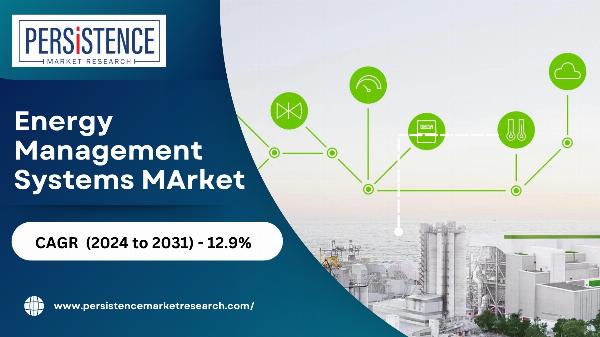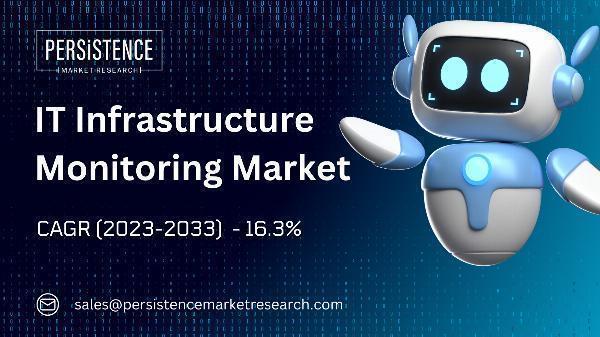Energy Management System Market Future Opportunities: Smart Grid Integration

Strong 8k brings an ultra-HD IPTV experience to your living room and your pocket.
The global energy management system (EMS) market is on a robust growth trajectory, projected to rise from US$41.9 billion in 2024 to US$98.0 billion by 2031, reflecting a remarkable CAGR of 12.9%. This growth is fueled by increasing energy costs, stringent energy efficiency regulations, and heightened sustainability awareness. EMS solutions, which include software, hardware, and communication systems, are crucial across diverse sectors such as healthcare, retail, manufacturing, IT & telecom, and residential areas. The market is highly fragmented, offering a spectrum of products from basic monitoring dashboards to advanced analytics platforms.
Historically, EMS solutions were primarily adopted by large industrial and commercial entities seeking to optimize energy usage and cut operational costs. The market saw a CAGR of 9.2% from 2019 to 2023, driven by rising energy costs and regulatory pressures. Looking ahead, the integration of EMS with building automation systems and the rise of smart buildings and grids are expected to further propel market growth. Increasing integration with renewable energy sources, such as solar and wind, along with advancements in smart grid technology, will continue to shape the market's favorable outlook and drive demand for innovative EMS solutions.
The energy management system (EMS) market is on the brink of transformative growth, driven by the integration with smart grids. As energy demands increase and the need for sustainable solutions intensifies, smart grid technology is emerging as a critical component in optimizing energy distribution and consumption. This article explores the future opportunities in the EMS market, particularly focusing on the integration with smart grids, and how this synergy is poised to reshape the energy landscape.
The Evolution of Energy Management Systems
Energy management systems have evolved from simple tools for tracking energy usage to sophisticated solutions capable of real-time monitoring, control, and optimization. Modern EMS leverage advanced technologies like artificial intelligence (AI), machine learning, and the Internet of Things (IoT) to provide detailed insights into energy consumption and facilitate efficient energy management.
The Rise of Smart Grids
Smart grids represent a significant advancement over traditional electrical grids. By incorporating digital technology, smart grids enable more efficient management of electricity distribution and consumption. They use real-time data to monitor energy flow, respond to fluctuations, and integrate renewable energy sources, enhancing the reliability and sustainability of the energy supply.
Integration of EMS with Smart Grids: A Game Changer
The integration of EMS with smart grids is unlocking a range of new opportunities in the energy sector. This synergy is driving innovation and creating value across various dimensions, including operational efficiency, sustainability, and economic benefits.
1. Enhanced Grid Efficiency
Opportunity: Integration with smart grids allows EMS to optimize grid operations by providing real-time data and analytics. This capability enhances grid efficiency by enabling dynamic response to energy demand and supply fluctuations.
Impact: By improving grid efficiency, EMS helps reduce energy losses, balance supply and demand more effectively, and lower operational costs for utilities. This leads to a more stable and reliable energy supply, benefiting both energy providers and consumers.
2. Advanced Demand Response
Opportunity: EMS integrated with smart grids can facilitate advanced demand response programs. These programs adjust energy consumption patterns based on grid conditions, such as peak demand periods or energy shortages.
Impact: Advanced demand response helps stabilize the grid and reduce the need for additional generation capacity. It also allows consumers to participate in demand response programs, potentially earning incentives or lowering their energy bills.
3. Seamless Integration of Renewable Energy
Opportunity: Smart grids are designed to accommodate renewable energy sources, such as solar and wind power. EMS can enhance this integration by managing the variability and intermittency of renewable energy generation.
Impact: By optimizing the use of renewable energy and managing storage solutions, EMS supports the transition to a more sustainable energy mix. This integration reduces reliance on fossil fuels, lowers greenhouse gas emissions, and contributes to global sustainability goals.
4. Improved Energy Storage Management
Opportunity: Energy storage systems, such as batteries, are increasingly used to store excess energy generated from renewable sources. EMS can optimize the use of these storage systems by managing charging and discharging cycles based on grid conditions and energy demand.
Impact: Efficient energy storage management ensures that stored energy is used effectively, reducing waste and improving the overall efficiency of the energy system. It also enhances grid stability by providing backup power during outages or peak demand periods.
5. Enhanced Grid Security and Resilience
Opportunity: Smart grids equipped with EMS can improve grid security and resilience by detecting and responding to anomalies or cyber threats. Advanced monitoring and control systems help protect the grid from disruptions and ensure continuous energy supply.
Impact: Enhanced grid security and resilience reduce the risk of outages and improve the overall reliability of the energy supply. This is crucial for maintaining energy access and stability in the face of evolving threats and challenges.
Market Trends and Innovations
Several trends and innovations are shaping the future of EMS and smart grid integration:
1. AI and Machine Learning
Artificial intelligence and machine learning are driving advancements in EMS by providing more accurate predictions and automated control. These technologies enhance the ability of EMS to analyze complex data, optimize energy use, and respond to changing conditions in real time.
2. IoT and Connectivity
The Internet of Things (IoT) is expanding the capabilities of EMS by enabling seamless connectivity between devices and systems. IoT sensors and smart meters provide real-time data on energy usage and grid conditions, facilitating more precise control and optimization.
3. Blockchain Technology
Blockchain technology is emerging as a potential solution for enhancing transparency and security in energy transactions. By providing a decentralized and immutable record of transactions, blockchain can improve trust and efficiency in energy trading and grid management.
4. Edge Computing
Edge computing allows data processing to occur closer to the source, reducing latency and improving real-time decision-making. In the context of EMS and smart grids, edge computing enhances the ability to manage and respond to data from various sensors and devices more efficiently.
Challenges and Considerations
While the integration of EMS with smart grids presents numerous opportunities, there are also challenges to address:
1. Interoperability
Ensuring compatibility between different systems and technologies is crucial for seamless integration. Standardization and interoperability are essential to enable effective communication and coordination between EMS, smart grids, and other components.
2. Data Privacy and Security
As smart grids and EMS collect and transmit large amounts of data, ensuring data privacy and security is paramount. Protecting against cyber threats and unauthorized access is critical to maintaining the integrity of the energy system.
3. Cost and Investment
The initial costs of implementing advanced EMS and smart grid technologies can be significant. Balancing investment with potential long-term benefits and cost savings is a key consideration for stakeholders.
Conclusion
The integration of energy management systems with smart grids is unlocking a range of opportunities in the energy sector. By enhancing grid efficiency, facilitating advanced demand response, integrating renewable energy, optimizing energy storage, and improving grid security, EMS and smart grids are driving innovation and sustainability. As technology continues to evolve and new trends emerge, the synergy between EMS and smart grids will play a crucial role in shaping the future of energy management, paving the way for a more efficient, reliable, and sustainable energy system.
Note: IndiBlogHub features both user-submitted and editorial content. We do not verify third-party contributions. Read our Disclaimer and Privacy Policyfor details.







